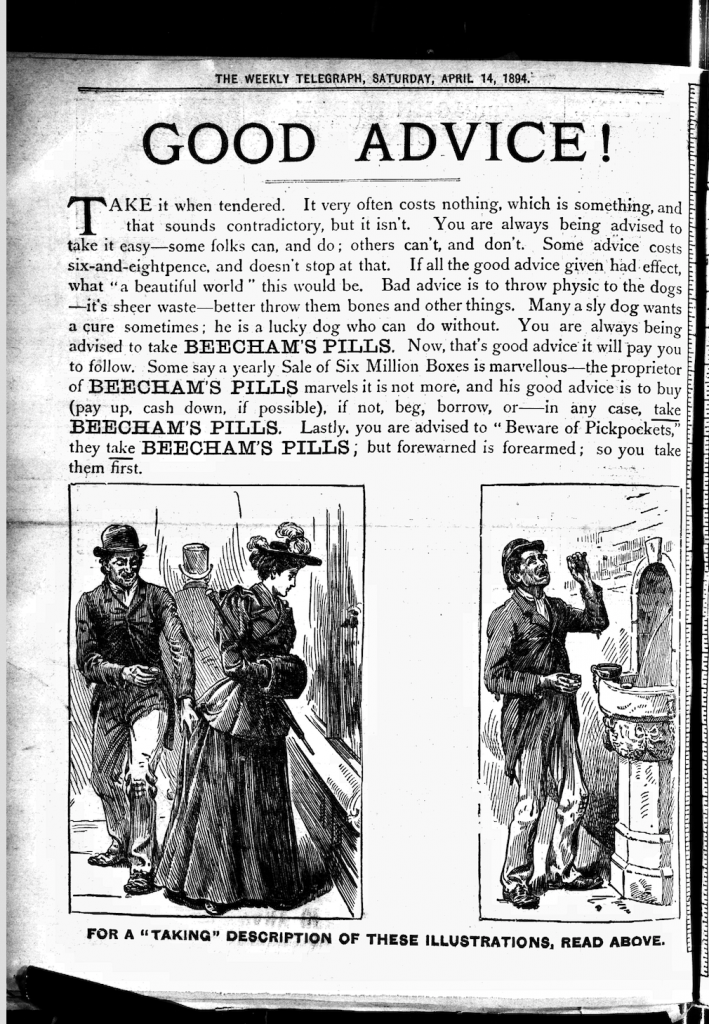by Courtney A. Floyd

Can we really consider newspaper novels and their later volume editions to be the same book? This question, or one much like it, was posed to me by my PhD advisor toward the end of my dissertation defense. My answer––an entirely sincere series of alternating “yeses” and “nos”––reflects something of the invigorating complexity that arises when working with a serial novel in its original publication context.
Mary Elizabeth Braddon’s Thou Art the Man (1894) changed very little between its serialization in the Weekly Telegraph from 6 January to 9 June 1894 and the publication of Simpkin’s three-volume first edition later that year. Aside from a chapter division, a surname change, and an alteration to one character’s defining traits, the text of the serial novel and the first edition are almost identical. But within the context of the Weekly Telegraph, these minor differences pack an immense semantic punch.
I first encountered Thou Art the Man in its volume edition (as reprinted by Valancourt in 2008). An M.A. student working on a thesis about women detectives in late-Victorian and neo-Victorian fiction, I read the novel as a sort of gender-swapped sensation plot nested in a detective story. Its pseudo-detective protagonist, Coralie Urquhart, simultaneously served as a patriarchal enforcer, policing the behavior of the heroine, Lady Sibyl, and a challenge to patriarchal order. This duality, I argued, is characteristic of the woman detective––a paradox that undermines any investigatory success she might achieve. But, in the context of the Weekly Telegraph’s numerous advertisements for patent medicines and beauty products, Coralie’s characterization is much more complex even than this ideological ambiguity.
Juxtaposed with patent medicine advertisements that confound text, testimonial, and cure, narrowly defining the healthy and ideal body in order to narratively disable potential customers to drive up sales (see fig. 1), Coralie’s detective work in Thou Art the Man takes on new meaning. For Coralie, in a manner reminiscent of these advertisements, works to uncover her quarry’s embodied secrets in and through texts––claiming the “power to read [Lady Sibyl’s] face” only after she’s interrogated Lady Sibyl’s bookshelves (27). Her newfound corporeal literacy allows her to avoid reliving family narratives of degeneracy and disease. And, in doing so, she becomes part of a larger nineteenth-century discourse about bodily (dis)ability and the mediation thereof by the printed page.
To read more, see Floyd, Courtney A. “Take It When Tendered”: M.E. Braddon’s Thou Art the Man and the Weekly Telegraph’s Media Model of Disability,” vol 45, no 1 (2019), pp. 59-80.
